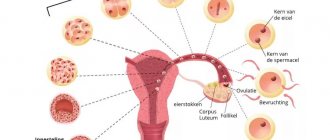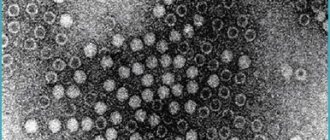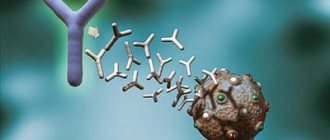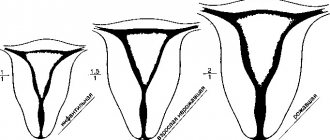In the first phase of the menstrual cycle, the main follicle, which is called dominant, grows and matures. Ovulation is the rupture of the wall of the dominant follicle and the release of the egg. It enters the fallopian tube. Within 24 hours she can be fertilized. The dominant follicle in the 2nd phase of the cycle is transformed into the corpus luteum, the main function of which is the synthesis of progesterone.
The corpus luteum functions for 10–12 days. If conception does not occur, the egg dies, the corpus luteum regresses, resulting in menstruation.
Symptoms of ovulation
- Mucous discharge from the vagina;
- Increased sex drive;
- Mood changes;
- Heaviness in the chest;
- Increase in body temperature.
For most women, ovulation is completely asymptomatic, although some representatives of the fairer sex say that they may experience the onset of such days in advance. During ovulation, a woman may feel a pulling pain in the lower abdomen. They can be very pronounced. This disorder is called ovulatory syndrome. The discomfort lasts for several days. A woman's discharge may change and become more viscous. During ovulation, her sexual desire increases. The maturation of the egg varies from day to day as follows:
- On days 5–7 from the beginning of menstruation, the cell is 4–5 mm in diameter.
- On days 8–10, a cover of connective tissue appears. The dominant stands out among other formations.
- On days 11–13, the diameter of the dominant reaches 16–18 mm. The remaining follicles regress. When the follicle volume is more than 16 mm, an egg-bearing tubercle appears. After 3-4 days, the egg matures and leaves the follicular cavity. She is able to become fertilized only during her life. It does not exceed 48 hours.
- On days 14–16, the next ovulatory cycle begins. The diameter of the remaining follicular cell, called the Graafian vesicle at this stage, is 20–22 mm.
Studies during one cycle are considered non-indicative. The duration of the menstrual cycle directly depends on the rate of maturation of the egg in its first phase, before ovulation. The standard classic version is 14 days with a 28-day cycle.
After the release of the egg, the second phase of the cycle begins (luteal) and for the same woman it is constant - from 12 to 16 days, but most often 14. In a long cycle, the maturation period of the egg is longer than in the standard one, and ovulation occurs later. For example, if a woman has a cycle length of 32-35 days, then the egg is released not in the middle of the cycle, as many believe, but on the 18-21st cycle or two weeks before the start of the next period.
Cycles in the body of women
During the fertile age, which includes a long period between puberty and menopause, the body undergoes monthly structural and functional metamorphoses affecting the secretion of hormones in the endocrine organs.
The beginning of the cycle, which lasts approximately 28 days, is menstruation, which is the release of blood, mucus and tissue that shed from the walls of the uterus. During the first period, the endometrial layer thickens to receive the egg after fertilization. At the same time, the oocyte matures and leaves the ovary.
If conception does not take place, the mucous membrane of the uterine wall exfoliates and comes out along with menstrual flow. During fertilization, the egg nests in the uterus, where all the conditions for the process of implantation and the development of pregnancy already exist.
Ultrasound folliculometry
Several ultrasound procedures using a vaginal probe can calculate the day of ovulation or conception in a woman. A visit to the ultrasound room is carried out 3-4 times per cycle with an interval of every 2-3 days. If the cycle is irregular, you will have to visit the doctor 3-4 times, starting from the 7th day after the end of your period - every 2-3 days.
If the cycle is regular, it is worth conducting an ultrasound 2-3 days before the expected day. With a 30-day cycle, ultrasound monitoring begins on the 10-11th day of the cycle, i.e. approximately 4-5 days before the middle of the monthly cycle. Subsequent sessions of ultrasound monitoring of the egg are carried out every two days and last until the egg is released. The onset of the ovulatory period is confirmed by ultrasound diagnostics, when the day before the size of the follicle was 20-24 mm, and now the growth of the corpus luteum has begun. The procedure can be performed through the vagina or through the abdominal wall. During intravaginal examination, no preliminary preparation is required, the main thing is to empty the bladder. During an abdominal examination, a traditional examination is performed through the abdominal wall. In order for it to pass without difficulties, three days before monitoring it is necessary to exclude all foods that can cause flatulence or bloating, and on the day of the examination it is necessary not to eat and drink at least a liter of water.
External signs
Sensitive women can calculate day “X” by changes in their usual state. It would seem, how to determine ovulation by sensations? There is nothing complicated about this, just listen to your body and notice changes in how you feel. The most reliable signs are:
- Increased sexual desire during ovulation days. It seems that nature itself has taken care of prolonging the human race, which is why these days many women feel a strong attraction to their partner.
- Soreness and swelling of the mammary glands, hardening of the nipples.
- Swelling of the inner labia.
- Drawing or tingling pain in the side of the ovaries or lower abdomen.
- Scanty intermenstrual discharge that is bloody or brownish in color.
- The appearance of acne on the face.
All of these symptoms occur under the influence of hormones produced by the female body, so you should listen to the signals of your own body. This method is not accurate, because sensations can be affected by malfunctions of internal organs and hormonal imbalances.
Ovulation tests
If you can track the follicle using ultrasound, then ovulation tests can be done at home. They work like this: 24–36 hours before the release of the egg from the ovary, the amount of luteinizing hormone (LH) in the urine sharply increases. A day or two before, he seems to “push” the egg through the wall of the ovary.
Ovulation tests determine whether the amount of the hormone is increased. They also allow you to calculate days favorable for conception. 5-6 days before expected ovulation, tests are performed twice a day. Since we are interested in ovulation in a cycle of 30 days, we need to start taking measurements from about day 13. If ovulation is not observed, then the second stripe will be absent. But the day before or on the 15th day, the test line will be as bright as the control line. This sign indicates that the upcoming ovulatory period is coming, which should be expected in the next 24 hours. You need to immerse the strip in a container with fresh urine for a few seconds, then place it on a dry surface and after about five minutes read the result. testing is carried out in a similar way to tests to detect conception.
Changing the nature of discharge
During the menstrual cycle, some cervical fluid is released from the uterus. This is odorless and colorless mucus, which in the first half of the cycle “clogs” the cervix, protecting it from premature penetration of sperm. During ovulation, thick mucus becomes thinner and begins to separate. Every woman these days can notice a viscous and transparent discharge, visually similar to egg white and odorless. If ovulation does not occur for some reason, there may be no discharge at all, or it will have an atypical color and smell.
This method should not be considered the main one and completely rely on it, but it is quite suitable as an auxiliary diagnostic, especially since it does not require any money or additional waste of time.
However, a change in the nature of the discharge does not always indicate an “X” day. There are a number of reasons that cause such changes in the female body:
- venereal diseases;
- vaginal infections;
- sexual arousal;
- taking antihistamines and other medications.
If the above factors are present, it is better not to use this method.
Basal temperature method
This method involves measuring the temperature in the rectum (rectally). It is measured immediately after sleep during the cycle. To do this, you need to use one thermometer. You need to knock it down the night before bedtime. Measurements are taken in the morning, immediately after waking up. Correctly measuring basal temperature will help determine whether a patient is ovulating normal, early or late. This is one of the easiest ways to determine favorable days for conception. This should be done after waking up in the morning, but you cannot get out of bed. I just woke up, and right after the thermometer. All results must be scrupulously noted on a special graph. At the end of the cycle, all points with measurement results are connected into a broken graph. During menstruation, measurements are not taken. On the first day of the cycle, the temperature reaches 36.9°C. A few days before ovulation, it can be 36.2°C – 36.4°C. An increase in temperature to 37°C - 37.4°C indicates that ovulation is occurring. If the temperature rises after ovulation, the woman is likely pregnant.
How are the processes of conception and pregnancy related?
For conception, the semen must enter the female genital tract five days before ovulation. Sperm move through the cervical canal into the uterus and manage to reach the fallopian tubes. Out of millions of sperm, only 100 reach the tubes, the rest die along the way.
The sperm move toward the oocyte, which moves toward them from the other side. Conception almost always occurs in the fallopian tubes, namely in the distal sections located closer to the ovaries.
The fertilized egg undergoes a series of divisions and moves up the uterus, where it attaches, penetrating the wall of the organ (endometrium). This is how the so-called implantation occurs. After this, the development of the embryo continues.
If fertilization is not successful, implantation does not occur.
Calendar method
This method of determining ovulation is suitable for those who have a regular menstrual cycle. It is 14 days before the start of a new cycle that full ovulation occurs. In order to determine the calendar of days for conception, it is necessary to analyze the last 3 months. The first day of the menstrual cycle is the first day of menstruation. It is 12–14 days before the start of a new cycle that full ovulation occurs. The cycle changes under the influence of various factors - health status, nervous tension, stress, physical activity, climate change when traveling, and so on.
Why doesn't ovulation occur?
Ovulation may be absent for various reasons. They can be divided into 2 groups: physiological and pathological.
Do not worry about the lack of ovulation in the following cases:
- Pregnancy: during pregnancy and in the first months after childbirth, women do not ovulate;
- Breastfeeding: if you breastfeed your baby, including at night, ovulation does not occur;
- In young girls (12–14 years old), when the menstrual cycle has not yet been regulated;
- Menopause: when menstruation stops, ovulation also stops;
- Taking oral contraceptives: normally, in this case, ovulation should not occur either.
Ovulation - reasons for absence
- Polycystic ovary syndrome.
- Inflammation of the genitals.
- Thyroid dysfunction.
- Dysfunction of the adrenal cortex.
- Tumors of the pituitary gland or hypothalamus.
- Systemic diseases.
- Stress.
- Early ovarian failure.
- Overweight or underweight woman.
- Starvation.
- Chronic lack of sleep.
- Mental and physical overload.
- Past infectious diseases of the nasopharynx.
- Radioactive exposure.
- Taking certain medications.









